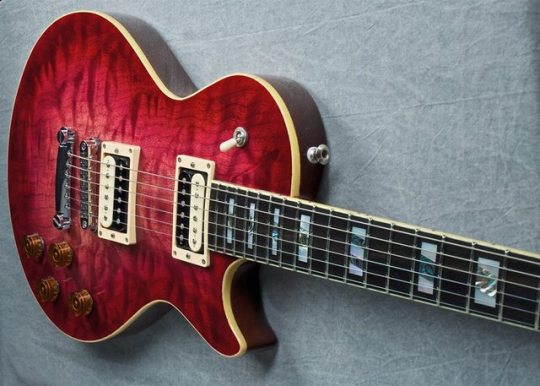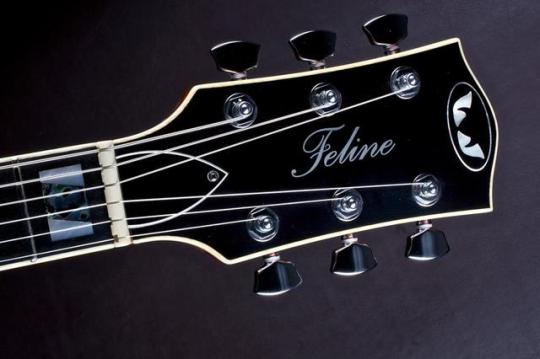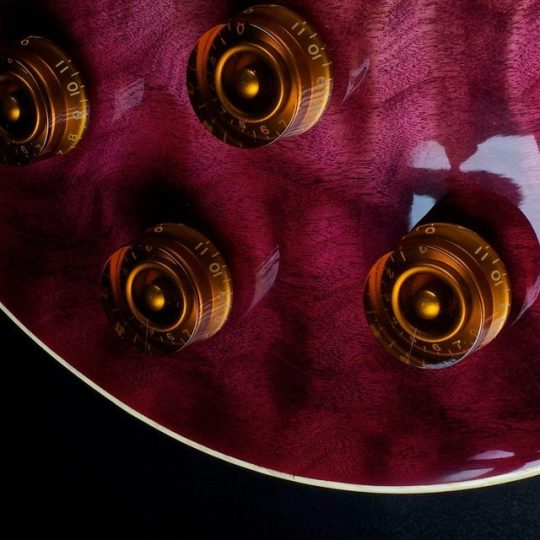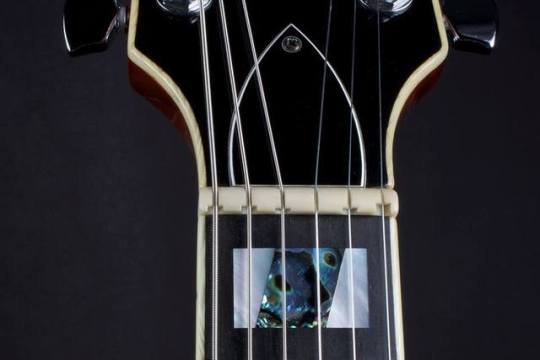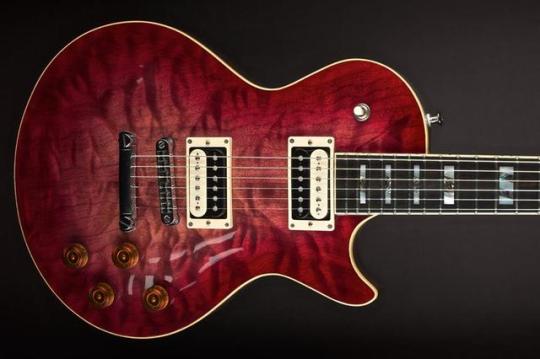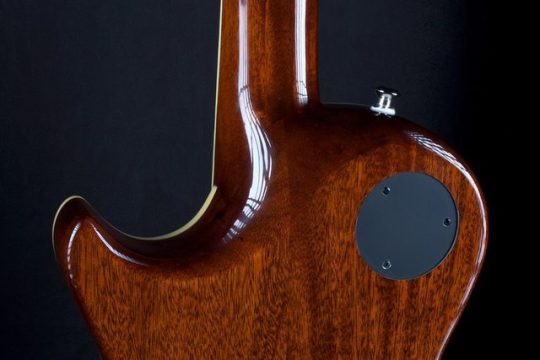Photo
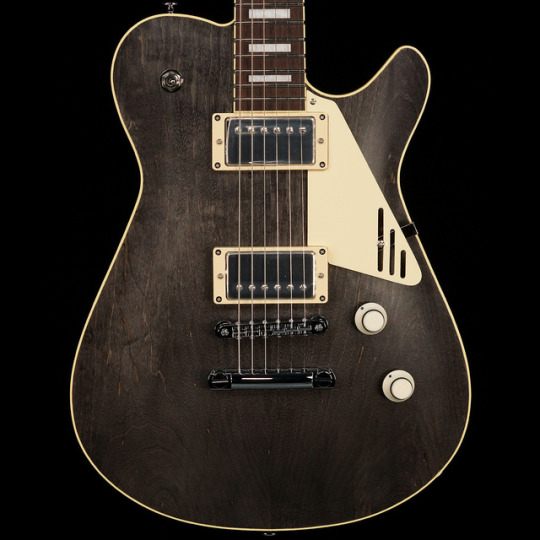
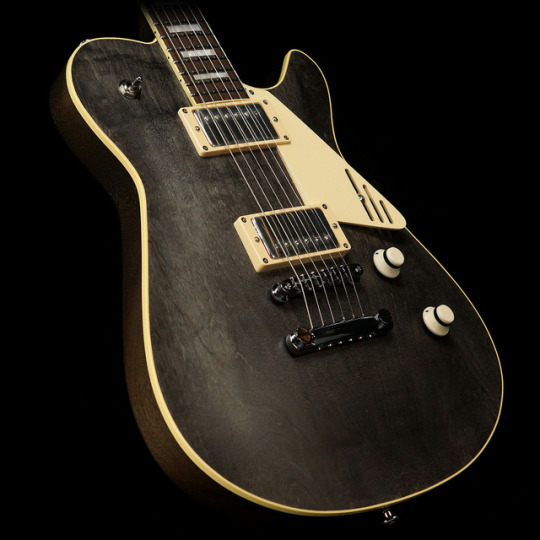
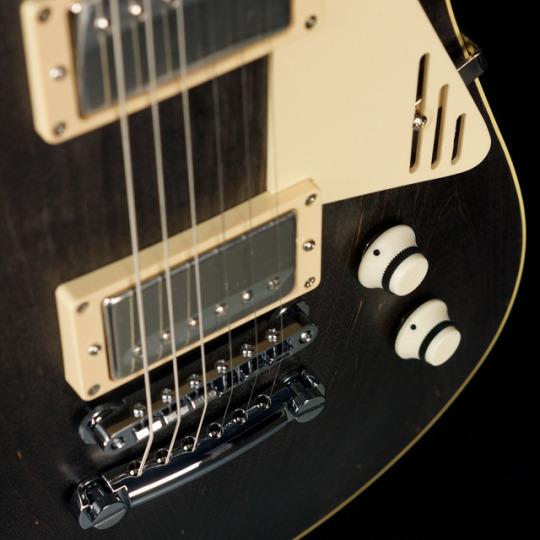

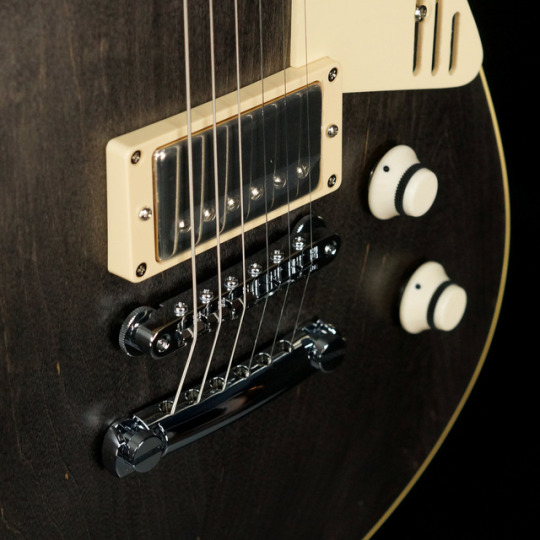
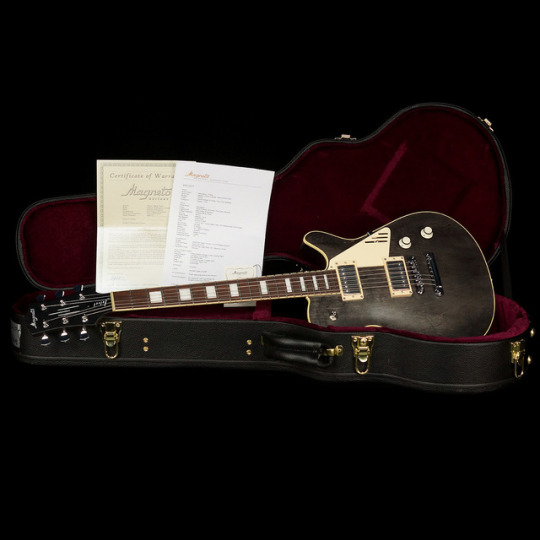
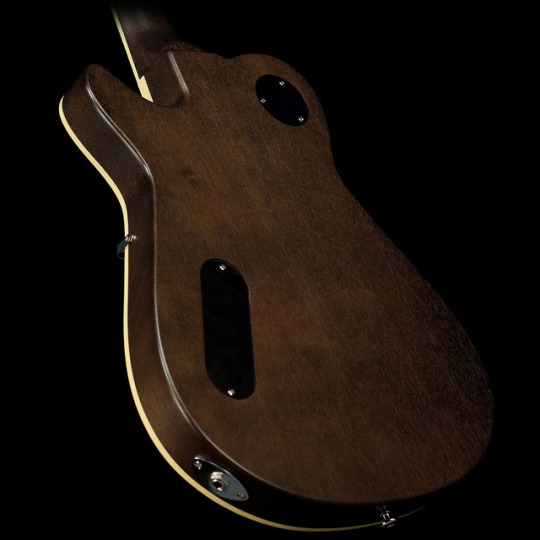
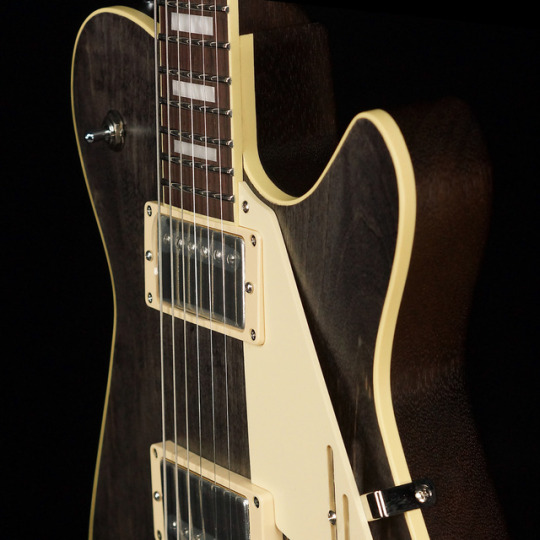
Magneto Velvet Single Cutaway Trans Black
[Source: Distinctive Guitar. Price: £2,304/$2,895]
123 notes
·
View notes
Photo








Magneto Velvet Single Cutaway Trans Black
[Source: Distinctive Guitar. Price: £2,304/$2,895]
123 notes
·
View notes
Photo
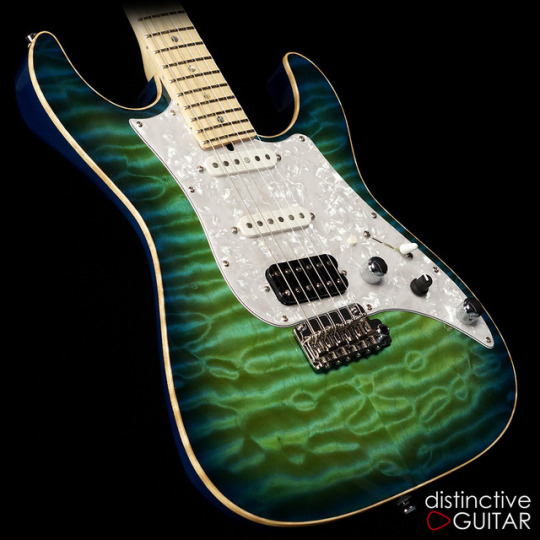
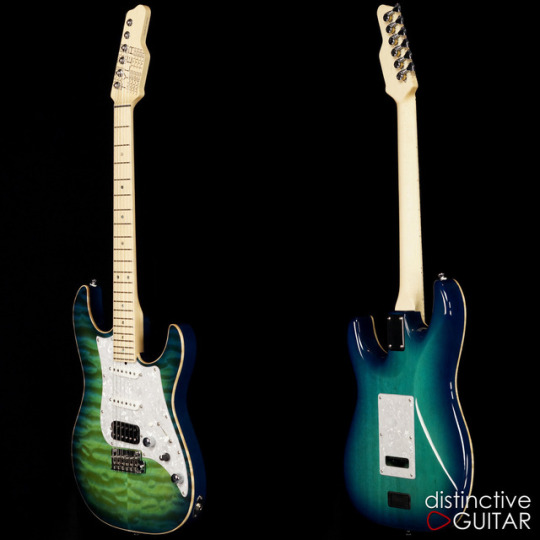
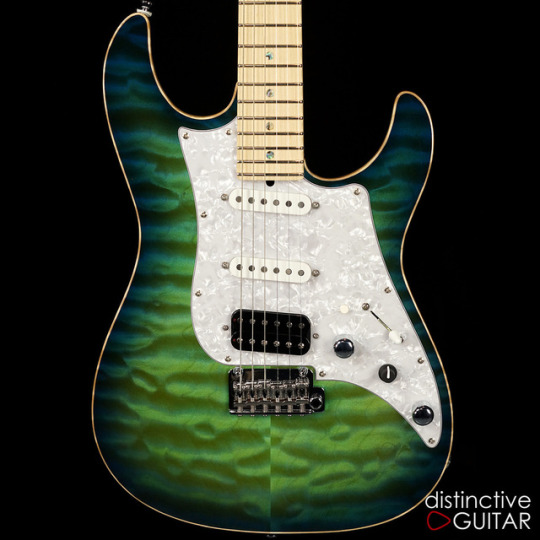
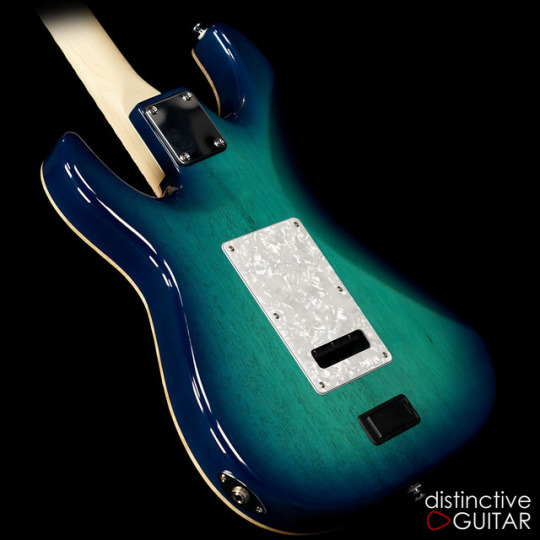
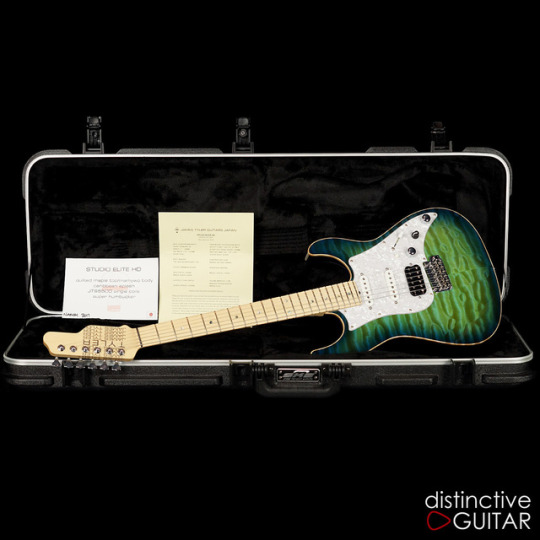
James Tyler Guitars Japan Studio Elite HD Caribbean Splash
[Source: Distinctive Guitar. Price: £2,942/$3,649]
87 notes
·
View notes
Text
The West London Mojo Triangle
New Post has been published on http://frankokellyguitar.org/guitar-thoughts/west-london-mojo-triangle/
The West London Mojo Triangle
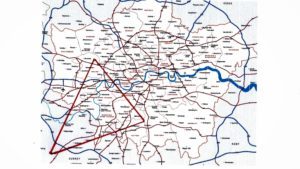

“It is strange how we all come from a similar area” , Richie Blackmore.
The term “Mojo Triangle” was first coined by James L. Dickerson as the title for his 2005 book which described the astounding array of musical styles that originated in the area between Nashville, Memphis and New Orleans.
I can’t promise the birth of Blues, Jazz, Country and Rock and Roll. But as a guitarist I want to tell you about a part of Greater London that birthed some of the most influential guitarists of all times. An area that gave rise to the clubs that would give the world the Rolling Stones and Cream and also see the creation of the worlds most famous amplifier.
Come with me into the West London Mojo Triangle!
This is not Central London with it’s grand buildings and tourist sights nor is it the old parts of the City and the East End where the chthonic memories are almost breathable, this the London that expanded West and South during the Victorian height of Empire using the railway to join up hundreds of villages that would form into the haphazard quilt of boroughs they are today and where London pushes into the county of Surrey on its South-West borders. note 1
Into this suburban milieu towards the end of the Second World War were born Jimmy Page, Jeff Beck and Eric Clapton, all within less than twenty miles of each other.
Within the same area Pete Townsend, Ron Wood and Brian May would be also be born.
Page was born at the top of our imaginary triangle in Heston. A nondescript suburb overshadowed by nearby Heathrow airport.
Two years later the young Richie Blackmore’s family would also move there from the West Country.
In the bottom left of our triangle Eric Clapton was born in the village of Ripley, Surrey and across to the East, Jeff Beck was born in Wallington.
A map of the best British rock singers would cover most parts of Britain but virtually all the best guitarists of their generation would be concentrated in one area.
Quite how the leading lights of British Rock guitar came to be born in such a geographically small place is remarkable. Page would later move to Epsom, Surrey putting him even closer to his peers. Barely 15 miles between all of them.
They were part of the cultural zeitgeist that saw young British men look west to a black blues culture that at the time was as mythic as it was unknown. A jigsaw puzzle of riffs fitted together on cheap guitars. Each new delivery of records from the U.S. obsessively listened to and dissected.
For a generation brought up with the insipid offerings of 1950’s radio this was a taste of something real.
The blues men’s songs may have spoken of sex, death and heartache but it was the pulse of the guitars underneath articulating something deeply human that resonated with these young men.
In the recordings of Robert Johnson, the voice narrates the scene, but the guitar works on a different level, a heartbeat and cry at the same time. This was profoundly influential particularly on Clapton and Keith Richards.
The shadow of World War II still hung over the early Sixties. Though the youth had not experienced the war personally everyone knew someone close to them who had suffered during the conflict. London was still dotted with bomb sites and food rationing had continued for nine years after the war.
The moving away from a dark destructive past into something brighter was a great impetus on British youth culture. There was resonance with the Blues’s defiant swagger against the odds.
By taking the template of the blues and distilling that feeling into a new brash hedonistic sound; the youth of the Sixties felt they were truly escaping the darkness of the previous generation. That theirs would be a golden age of sexual and spiritual freedom carried there with the aid of an unquestioned technology.
One factor that aided the dissemination of the Blues were three clubs that would showcase and bring together the most gifted of their generation.
In a small basement below a bakery in Ealing, West London the appropriately named Ealing Blues club opened in March of 1962 by Blues evangelist Alexis Korner. His band, Blues Incorporated included Charlie Watts on drums and Jack Bruce on Bass and would serve as a greenhouse for many aspiring young musicians.
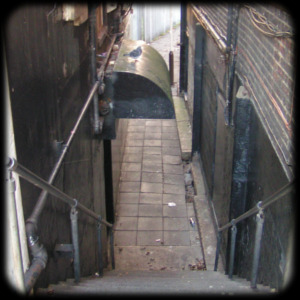
[Ealing Club entrance]
There the young Mick and Keith would be so impressed by Brian Jones’s slide playing they asked him to join their band. Rod Stewart, Pete Townsend and Jimmy Page were also among the regulars of this small shabby club.
In nearby Richmond in early 1963, the Crawdaddy club opened at the back of the Station Hotel Pub.
The Rolling Stones took up a two night a week residency here with their classic line up of Jagger, Richards, Jones, Wyman and Watts now in place.
The Beatles would come to see them there and with audiences overflowing on the streets the club was forced to move to bigger premises at the nearby Richmond Athletic Ground.
The Stones soon achieved fame and their place was taken by a group called the Yardbirds who would hire a young Eric Clapton as their lead guitarist.
The Yardbirds also found commercial success which caused blues purist Clapton to leave and join John Mayall’s group, the Bluesbreakers. Using a then unpopular Gibson Les Paul run through a custom made Marshall amp, Clapton redefined the British Blues sound with a smooth but fiery overdriven tone that would cement his status as one of the finest guitarists in the world.
Ever restless, Clapton would later team up with fellow Ealing club patrons Jack Bruce and Ginger Baker to form Cream whose heavy improvised interpretations of the Blues would be an influence on Led Zeppelin and Deep Purple and spawn many imitators.

[The Yardbirds. Jeff Beck 1st left. Jimmy Page 2nd from right.]
The Yardbirds found an able replacement in the mercurial Jeff Beck whose experimental approach to guitar helped greatly added to the bands success. Beck was overlapped and ultimately succeeded by his friend Jimmy Page who had finally decided to give up his lucrative career in session work.
The group would fragment in 1968 leaving just Page and manager Peter Grant to fulfil a tour commitment in Scandinavia. New members were recruited and so great was the chemistry that upon the tours completion they recorded an album. A threat of legal action by an original member caused the band to change their name upon the records completion and so Led Zeppelin came to be.
Eel Pie island an island in the River Thames at Twickenham in the Borough of Richmond was also an important venue in the development of many artists. It’s eponymous hotel being the place where a young Rod Stewart first got noticed and where again the Stones and the Yardbirds continued to ply their trade. As the Sixties progressed names as big as Bowie, Pink Floyd and Black Sabbath would also play there until it morphed into Britain’s biggest hippie colony.
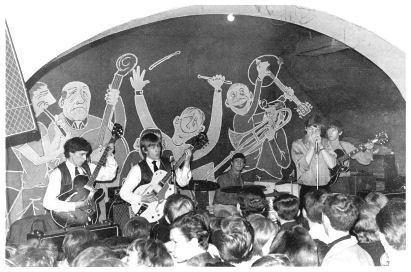
[The Stones play Eel Pie Island 1963]
The symbiotic relationship between the clubs and the bands concentrated in such a small area made for a regular exchange of ideas and band members but one thing would become clear was that this was not like Liverpool where the Beatles would totally dominate the scene and the rest were left behind.
Here the quality of musicians was matched by their quantity. For every aspiring young guitarist elsewhere in the country how many had Clapton’s focus, Beck’s originality or Pages’s breadth of vision? That essential quality that put them ahead of the pack and created a sonic landscape that would inspire generations of guitarists.
Richie Blackmore like his childhood neighbour Jimmy Page would spend his early career as a session musician. After a long period in backing bands, Blackmore would join Deep Purple where his more classically influenced style would have a huge impact on the growing genre of Heavy Metal. Every significant guitarist who emerged in the eighties would acknowledge their debt to Blackmore.
The Who were also on the rise. Pete Townsend’s highly distinctive playing style powering their hits. Their 1973 album Quadrophenia would be an homage to the mid sixties “Mod” culture of West London. One of factors in the Who’s early bombastic stage shows would be Townsend’s friendship with local Jazz drummer Jim Marshall.
In 1962 Marshall opened a music shop in Hanwell, West London. Always interested in amplification and listening to the wishes of local teenage guitarists like Townsend and Richie Blackmore he had a try at making an amp that would be more powerful than those available at the time.
With the aid of two friends and after six attempts the first Marshall Amp went on sale, rapidly selling out in days.
By the mid-sixties to keep up the with demand for bigger and louder amps several new models were made including the “Bluesbreaker” amp for Clapton and the first Marshall Stack made for the Who. By the end of the decade what started as a small local music shop has transformed itself into a world beating manufacturer. Almost every major rock act on earth would go on to use Marshalls but it was in 1966 that he would meet the man he described as “the greatest ambassador my amplifiers have ever had”.
Former shop employee, drummer Mitch Mitchell brought in his new boss to see his old boss and so Jimi Hendrix added a vital ingredient to his then still largely unknown sound.

[Jimi Hendrix with Noel Redding and Mitch Mitchell.]
London would play a pivotal role in Hendrix’s career. At the “Bag of Nails “night club British rock royalty including the Beatles, Mick Jagger, Townsend and Beck sat in stunned disbelief as they witnessed his phenomenal stage show.
The challenges and possibilities that Hendrix’s playing posed fed back into the British guitar community. The bar had been raised and for the more ambitious players like Clapton or Beck, Hendrix was an energising presence.
Within a year Hendrix would make his first album in London launching an astonishing body of work that would innovate how the electric guitar would be played for ever. A chance meeting in a nightclub with young acoustic expert Roger Mayer would give him access to the cutting edge effects he was designing such as the Octavia pedal used on “Purple Haze”. “He would talk in colours and my job was to give him the electronic palette which would engineer those colours so he could paint the canvas.” Mayer said.
Together with his Marshall amps, Hendrix now had the tools to express the sounds he heard in his head.
The iconic images from the American Monterrey and Woodstock festivals are how we visually remember him. His searing “Star Spangled Banner” is probably one of the most eloquent and potent protest songs ever played without words.” I’m American so I just played it” Hendrix later said in an interview. A statement that was filled with nuance as to what type of American or indeed whose America he was talking about.
But his life was interwoven with London. A place he often described as the only home he ever had. His unstoppable ascent beginning with his arrival there in late September 1966. The mythic arc of his life tragically ending in late September 1970 in West London’s Notting Hill.
In Hendrix the apotheosis of the American Blues man was achieved. But without London it would not have happened. The enthusiasm of a handful of suburban English kids making possible a discovery by White America of an art form that most were unaware of. The heady mix that originated in the American South was given a British twist and a decade of unparalleled creativity took place.
By the Seventies there would not be a rock guitarist in the world who was not influenced by at least one of the guitarists from this part of greater London.
The synchronicity involved in having so many creative people in one small place is still inexplicable. Nothing in the landscape suggests inspiration. A guided tour would be met with bafflement as to the prosaic nature of the locations. Nevertheless the world of music owes a great deal to the “West London Mojo Triangle”!
note 1Surrey’s borders have always been pushed back as London expanded. Historically Surrey was the southern side of the Thames at London. So Shakespeare’s plays at the Globe theatre would have been shown in Surrey even though today it looks to be obviously in the centre of London. A significant change to the borders happened in 1965 which means that for the purposes of my story some places named such as Richmond would have been in Surrey at the time but after 1965 would then be part of Greater London.
#short_code_si_icon img width:40px; .scid-3 img width:40px !important;
Share :





0 notes
Photo
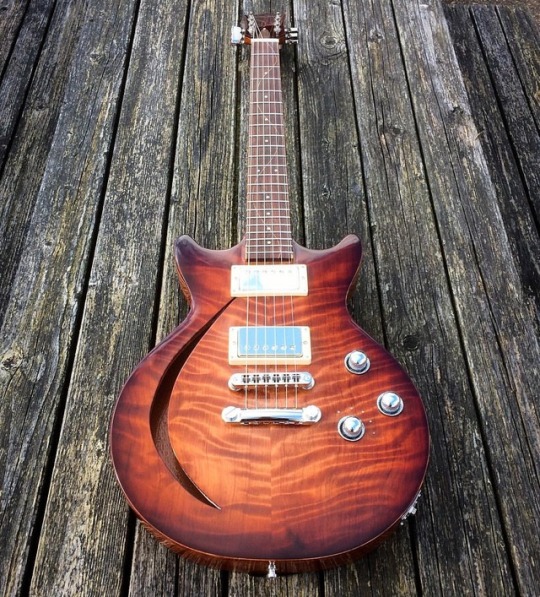
Redwood hollowed GTO. Cocobolo board, binding, head veneer and stringer. Honduras Mahogany. Bare Knuckle Mules, 5 Way Rotary, 13 tones. 7.4lbs… #jamescollinsguitars #boutiqueguitars #handbuilt #madeinengland #bareknucklepickups #redwood #cocobolo #mahogany #tone #guitarsofinstagram #guitarporn
40 notes
·
View notes
Photo

Fender Masterbuilt Yuriy Shishkov Featherlight Cabronita
[Source: Rebel Guitars. Price: £5,325/$6,500]
103 notes
·
View notes
Photo

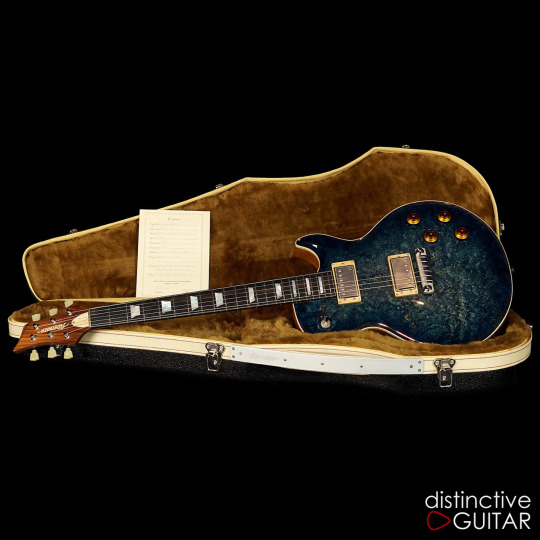
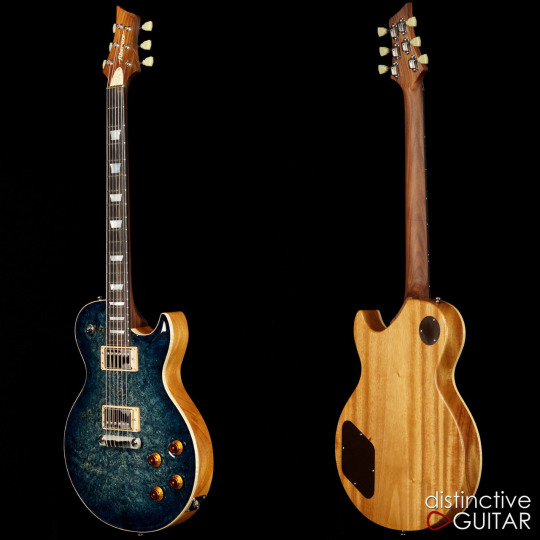

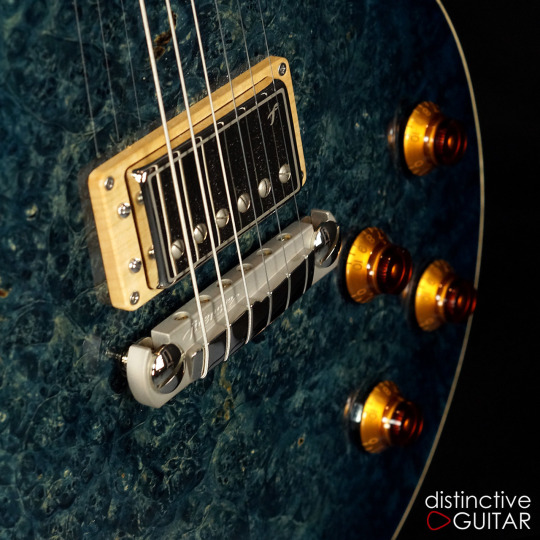

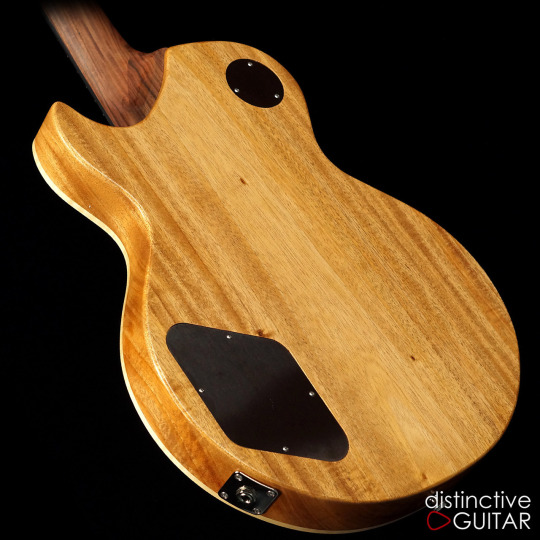

Fibenare Basic Jazz NAMM Singlecut Burl Tortoise Blue
[Source: Distinctive Guitar. Price: £4,804/$5,999]
136 notes
·
View notes
Photo

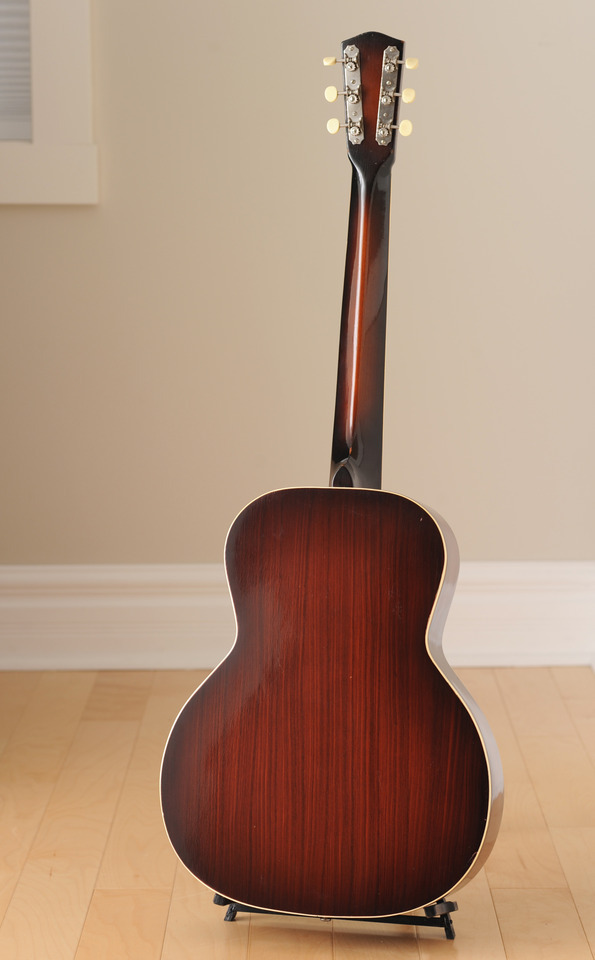
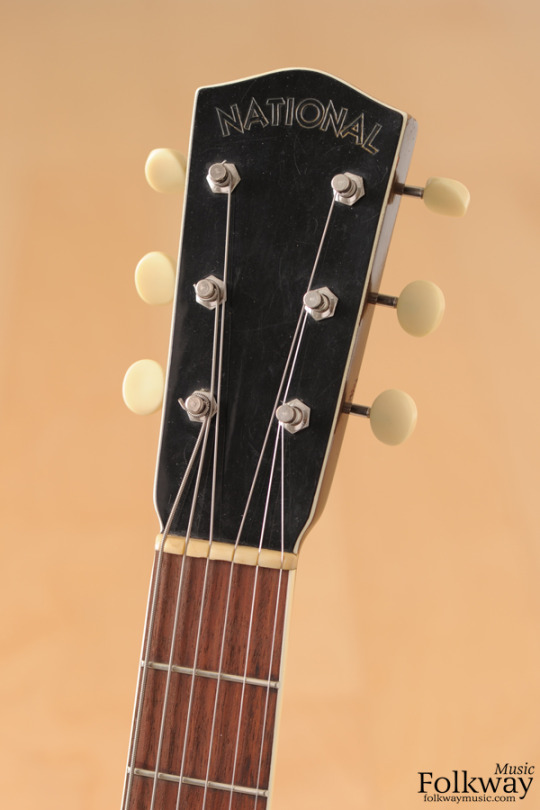

1937 National Trojan
from http://www.folkwaymusic.com/
23 notes
·
View notes
Photo
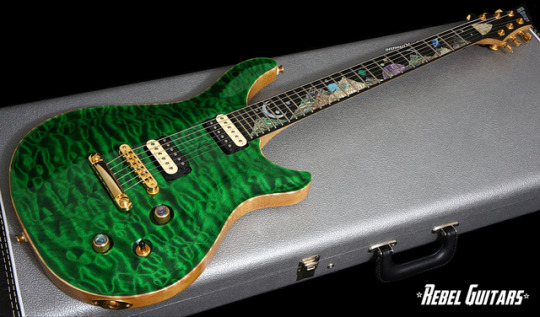
Roman Guitars Quicksilver Moonscape in Trans Green
[Source: Rebel Guitars. Price: £4,092/$4,995]
67 notes
·
View notes
Photo

*sigh* #telecastercustom #fender #telecaster #1974
71 notes
·
View notes
Photo

Matching Flame Maple GTs. Ready to Ship! Just got to get through the ton of paperwork to get them into the States.. almost done. 🤓 #handbuilt #boutiqueguitars #madeinengland #love #paperwork #destroyallguitars
37 notes
·
View notes
Photo
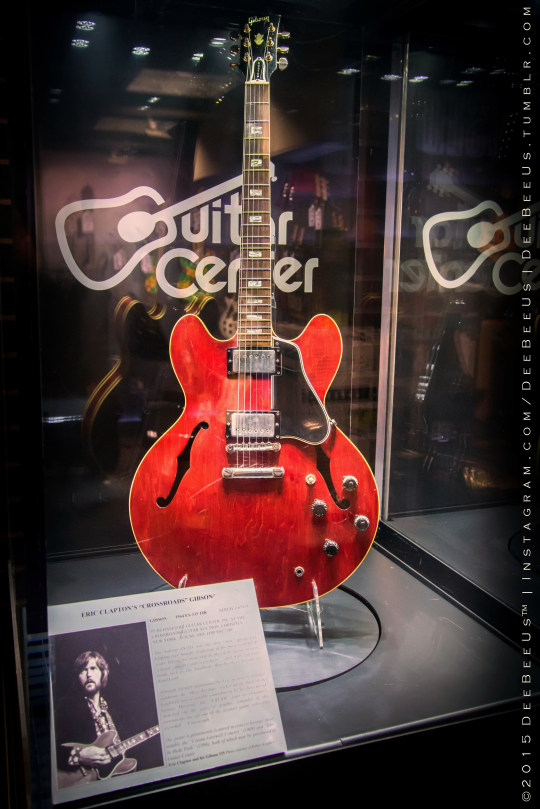

Eric Clapton’s 1964 ES-335, played with Cream, and his Frenken-Strat “Blackie”. Not replicas…these are the real thing. Both purchased in 2004 by Guitar Center, with proceeds going to the Crossroads Center.
170 notes
·
View notes
Photo
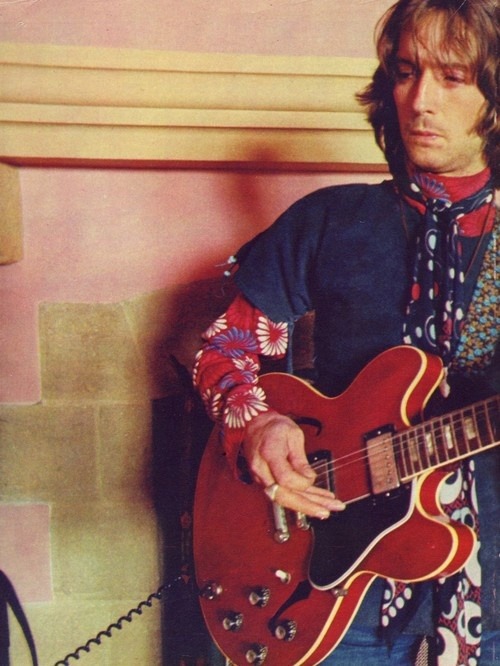
Eric Clapton his most historically significant guitar: a 1964 Gibson ES-335 TDC, bought with his Yardbird earnings.
235 notes
·
View notes
Photo
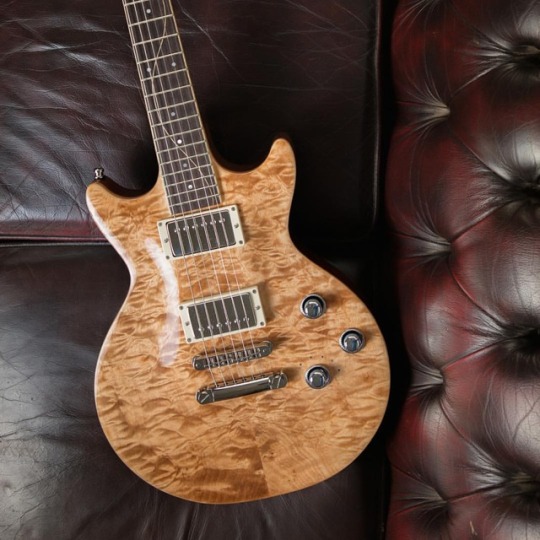
Quilt Maple GTS. #quiltmaple #mahogany #boutiqueguitars #indianrosewood #rocknroll #madeinengland #handbuilt
31 notes
·
View notes
Photo
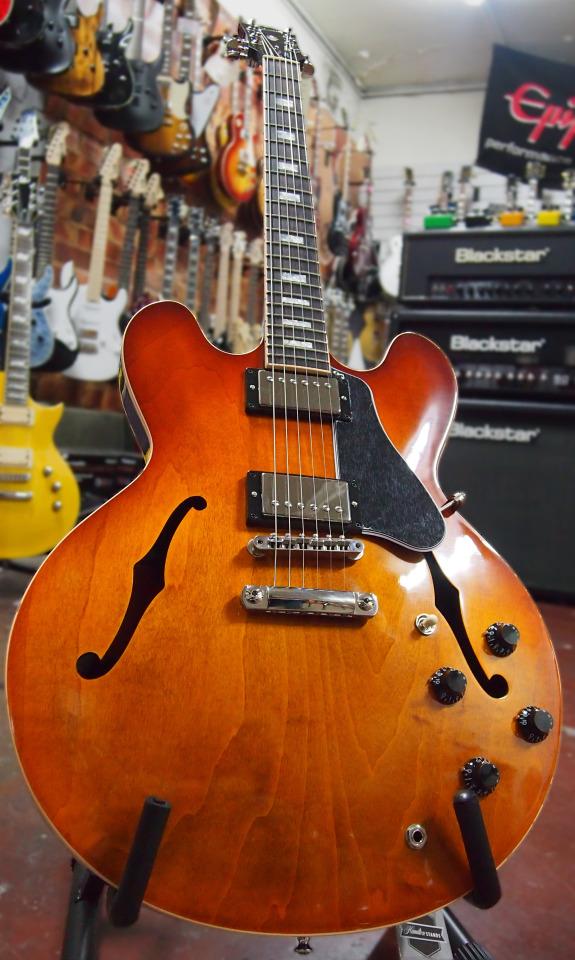
JUST ARRIVED: Faded Lightburst Gibson ES-335.
Are you a fan?
160 notes
·
View notes
